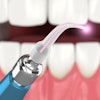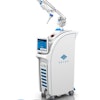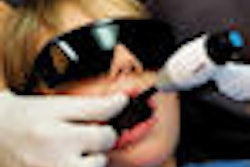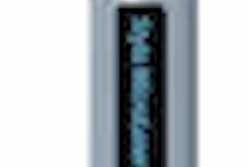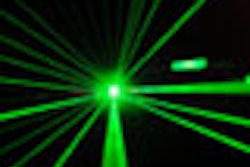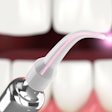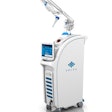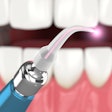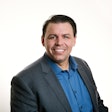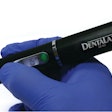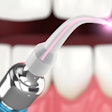
SAN FRANCISCO -- Zap! The age of Buck Rogers has reached the dentist’s office, laser experts demonstrated in a presentation at the American Dental Association's 148th Annual Session held recently in San Francisco.
Lasers are showing that they offer clear advantages over conventional surgery, said Joel M. White, DDS, MS, a clinical professor of dentistry and Donald J. Coluzzi, DDS, an associate clinical professor of dentistry, both from the University of California, San Francisco.
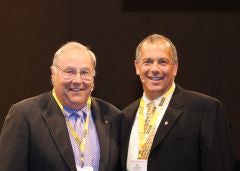 |
| Dr. Coluzzi (left) and Dr. White showed the benefits of laser technology at the ADA's 148th Annual Session in San Francisco. |
The two pioneers showed off the prowess of the new technology at a classroom in the round, blasting away at the gums of pig jaws and cutting lesions out of extracted teeth.
Only about 8 percent of dentists use lasers, yet the advantages over scalpels are becoming more and more clear, said Dr. Coluzzi:
- Lasers kill bacteria. "Disinfection is huge," he said.
- Lasers are more precise. "The scalpel can sometimes cut too deep," said Dr. Coluzzi. "With the laser you go layer by layer."
- Lasers cause coagulation as they cut, avoiding the need for sutures.
- Lasers are less likely to leave scars
The new technology does have a couple of drawbacks compared to the old-fashioned blades, he acknowledged: lasers leave a less even incision width, and healing is by secondary intention.
| Laser treatment of a class I carious lesion. Video courtesy of Donald Coluzzi, D.D.S. |
| Having trouble viewing this clip? Click here to download the free Flash player. |
The comparison to drills is similar, Dr. Coluzzi said:
- Lasers are less likely to cut too deeply. "With a drill, you sometimes can't tell you're through the enamel until it's too late," he said.
- Lasers don't transfer as much heat to the tissue. "If you hit [patients] with a laser there is much less pain than with a drill," Dr. Coluzzi said, adding that some procedures that are done with a laser don't require anesthesia where anesthesia would be needed for a drill.
The only relative advantage the two experts could cite for drills is greater speed for some procedures.
The technology isn't simple, though. In their demonstration, the two dentists explained that the ideal energy level and wave length vary a lot from one procedure to another.
"Erbium lasers are good for hard tissue," said Dr. White. "Diode and KTP [potassium-titanyl-phosphate] lasers are excellent for soft tissue."
Among the procedures they demonstrated were gingivectomy, soft tissue crown lengthening, fibroma removal, and sulcular debridement, which is the most common dental use of lasers, they said.
Dr. White warned that dentists shouldn't use the razzle-dazzle of lasers as a marketing tool. "Please don't buy new technology and market the hell out of it hoping to attract new patients," he said. "Then you are using technology you don't know much about on patients you don't know much about."
But lasers are a worthwhile investment nevertheless, he said, citing a study that found 75 percent of dentists were satisfied with their lasers. "Don't worry, these lasers will pay for themselves," he said.
